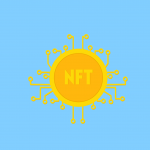Smart contracts are a type of computer program that facilitate, verify, and enforce the negotiation or performance of a contract. They are often used in blockchain and decentralized applications, and are known for their ability to automate complex and time-consuming processes.
So why should you start conversations with your kids about smart contracts? Here are a few reasons:
- To help them understand the future of technology: Smart contracts are an increasingly important part of the technology landscape, and it’s important for kids to understand how they work and the role they play. By starting conversations about smart contracts, you can help your kids develop a deeper understanding of the technologies that will shape their future.
- To encourage critical thinking: Smart contracts can be complex and technical, which makes them a great opportunity for kids to practice critical thinking and problem-solving skills. By discussing smart contracts with your kids, you can help them learn how to approach complex concepts and break them down into more manageable pieces.
- To teach them about the importance of trust: Smart contracts rely on trust and transparency, which are important values to instill in kids. By discussing the role of trust in smart contracts, you can help your kids understand the importance of honesty and integrity in their own lives.
- To expose them to new concepts: Smart contracts can be a great way to expose kids to new concepts and ideas. By discussing smart contracts with your kids, you can help them learn about topics like cryptography, blockchain, and decentralized applications, which can be both educational and fun.
In conclusion, there are many good reasons to start conversations with your kids about smart contracts. By doing so, you can help them understand the future of technology, encourage critical thinking, teach them about the importance of trust, and expose them to new concepts. So don’t be afraid to bring up the topic of smart contracts with your kids – you might be surprised at how much they can learn and how engaged they can become in the conversation.








